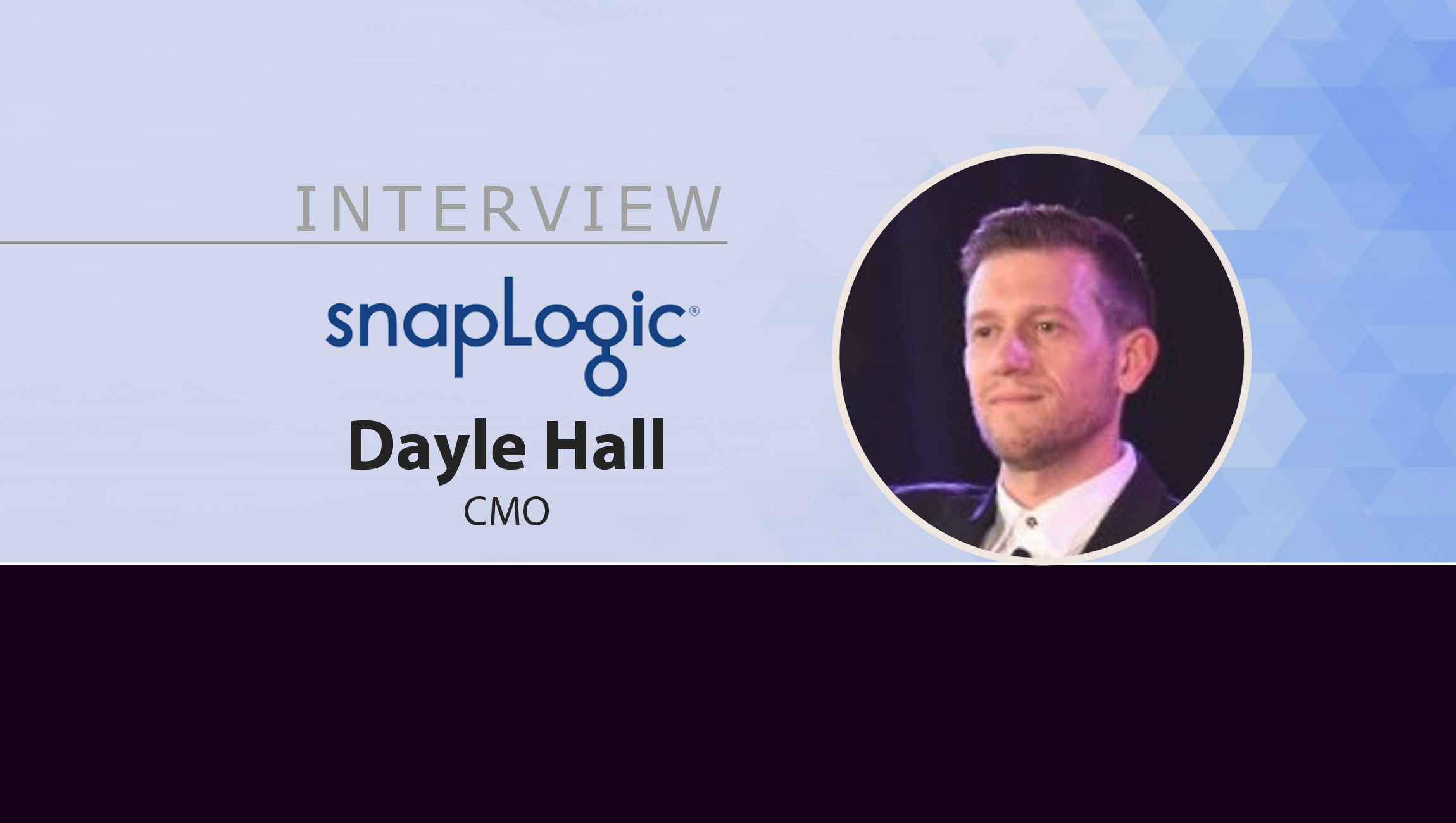Dayle Hall, Chief Marketing Officer at SnapLogic joins us for a quick Q&A to share a few top of mind marketing trends:
______
Welcome to this martech chat Dayle, tell us more about your role at SnapLogic as CMO and what a typical marketing day is like for you and your marketing team?
My role is very revenue-focused. I’m regularly looking at our pipeline – what are the most recent results, what activities are coming up – and paying attention to what’s converting. I also talk to our Chief Revenue Officer (CRO) two-to-three times a day to discuss what can be done to help push conversions forward, or to brainstorm solutions for a product or territory that may need some additional attention, or to learn what’s working correctly with those that are performing better than expected. In short, a large part of my role is doing what I can to give the sales team what they need to make sure the organization stays on track for the current quarter, while keeping an eye open toward what the next few quarters will look like…
Marketing Technology News: MarTech Interview with Jamie Gier, CMO at Ceros
What are some of the top best practices that come to mind that you’d like to highlight if someone were to ask you what it takes and what should be the focus when building a marketing plan and marketing team from the ground up?
The most important thing is to closely align with your sales team. Always! This will be the key indicator of your success. When you’re building a marketing plan and a team to implement it, remember that everyone in the organization does better work if the pillars of your organization – namely your product marketing and demand generation – are strong. Your focus should be on building up the organization’s ability to position and package the product and its ability to sell it. The rest falls in line after those areas are solidified.
Can you talk about some of the core marketing technologies that have come handy through your years in marketing? When it comes to martech adoption today, in what ways would you advise marketing teams to be lean?
You have to have the core, baseline systems in place in order to operate; for example, you can’t drive demand without certain tools to support your efforts, such as email tools, SEO, ABM etc.
That said, I’ve been really impressed with how new technologies, for example those that incorporate AI, open up new viewpoints that we never had in the marketing function before. For example, tools can show us just what sales is doing with a lead – and what is successful and what is not. Modern marketing technology can track how leads go through the funnel and what actions are taken along the way. This can help us learn how to better invest the team’s time and determine where to put the right resources to support their efforts.
In addition, one area of growing importance is functionality that allows executives to pull together disparate sources of information and data to get a more holistic view of what’s happening with your customers, with your sales efforts, across the organization. I expect these types of functions will become even more important in the years to come.
Marketing Technology News: MarTech Interview with Alexander Rublowsky, EVP Marketing at Controlup
What are some core / top go-to market strategies (and tools that support this) that you’ve often followed through the years? How might go-to-market strategies differ for marketing teams supporting start-ups or small mid-sized businesses vs. larger, more established companies?
You have to remember that the go-to-market strategies for every company are different – which will make the areas of focus for every team different as well.
If you’re in an emerging market – a new product without a category, for example – you need to find a way to get traction quickly. Grow as fast as you can, acquire customers fast, improve the product fast and use your network for targeted introductions from investors, supporters and get them to try the product..
When you’re in an established market, a massive opportunity comes from enabling the channel, through partner relationships. The channel will help your company be able to scale and accelerate growth (beyond keeping hiring sales people). So there is a big opportunity to find ways to identify joint accounts, joint customers and joint strategies that will build your channel business.
A few predictions that you have for the future of martech and marketing?
For the most part, all marketing is account based marketing (ABM). Most martech solutions will need to offer something that addresses ABM to help sales and marketing teams be more targeted in their efforts. I am seeing many of the ABM vendors expanding their offering to get further into the martech stack, and I believe we will see others in the stack looking to add ABM capabilities as well. Tools that can help bring that account-level focus are growing in importance, and will experience immediate growth.
Another prediction is not a new prediction – it’s something we’ve been talking about for years. But we are now much closer to getting to where the end-to-end customer experience will finally be owned by the marketing team, going well beyond the prospecting and initial acquisition of the customer. Integration tools that enable companies to get a better, faster, more accurate view into customer behavior will be key to helping align people, processes, and tools between the marketing, sales, and support functions, making them better at understanding and catering to the customer’s needs. Marketing is the perfect fulcrum to pull all this together.
A few takeaways for marketing leaders and CMOs in 2021: top factors they should keep in mind as they plan for the rest of the year, innovate and expand their teams?
Every CMO will hire a direct report who is their ‘chief’ marketing analytics person, or the head of marketing intelligence or something similar. They’ll be responsible for giving the CMO the data-driven intelligence needed from inside and outside your company (analyst reports, market data, etc.) to make the right decisions.
Another area to think about is the return of large industry events post-pandemic. How much of our budgets and resources do we want to be putting behind large tradeshows anymore? Do we really want to return to how we did events before the pandemic? This situation has presented us with an opportunity to reset and decide whether it’s really necessary to spend as much as you have in the past, or if more focused, digital or customer-driven activities would get you a better return.”
Marketing Technology News: MarTech Interview with Vance Reavie, CEO at JunctionAI
 SnapLogic delivers intelligent automation that connects your enterprise and unlocks the power of your applications and data.
SnapLogic delivers intelligent automation that connects your enterprise and unlocks the power of your applications and data.
Dayle Hall is CMO at SnapLogic, provider of a self-service, AI-powered integration platform that helps connect applications and data sources, automate common workflows and business processes, and deliver exceptional experiences. He leads the company’s marketing organization, developing go to market strategy, creating product marketing differentiation, and building demand generation. Dayle is a seasoned marketing leader, previously working at People.ai, where he built marketing from the ground up, and Lithium Tech, where he grew the company and its market position. Previously, he worked at Aruba Networks, Cisco and Oracle. He holds a Business Information Studies degree from Teesside University.











